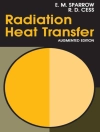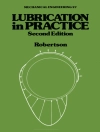In spite of the potential use of nanomaterials as tissue engineering devices, implants, biosensors, drug delivery devices, etc., there has yet to be a compilation of the risks associated with the in vivo use of nanomaterials. There are numerous and well-known risks because of the size of nanoparticles. For example, nanoparticles can cross cell membranes and enter the cytoplasm undetected.
The aim of this book is to provide one of the first (if not the first) detailed views of how cells and tissues in the body deal with nanoparticles. This is important not only for implantable devices, but also for the manufacturing of nanophase materials when particles can be inhaled or enter the body through the skin. Only by compiling research at the intersection of nanoparticles and biological processes can we determine if nanophase materials are safe to be manufactured, handled, and/or implanted for various medical applications.
Mục lục
Developing Practices for Safe Handling of Nanoparticles and Nanomaterials in a Development-Stage Enterprise: A Practical Guide for Research and Development Organizations.- Cytotoxicity of Photoactive Nanoparticles.- Breeching Epithelial Barriers – Physiochemical Factors Impacting Nanomaterial Translocation and Toxicity.- Safety and Efficacy of Nano/Micro Materials.- Biomedical Applications of Nanoparticles.- Unexpected Reactions by In Vivo Applications of PEGylated Liposomes.- Hydrogel Nanocomposites: Biomedical Applications, Biocompatibility, and Toxicity Analysis.- Cytotoxicity and Genotoxicity of Carbon Nanomaterials.- Calcium Phosphate Nanoparticles: Toxicology and Lymph Node Targeting for Cancer Metastasis Prevention.- Nanoparticles for Cancer Diagnosis and Therapy.












